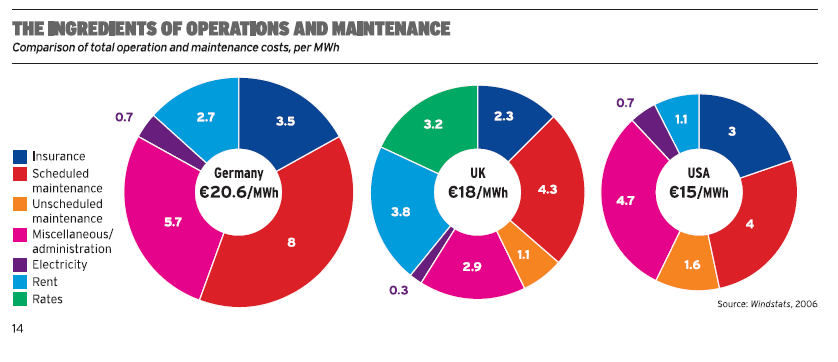Maintenance work is always related to safety. This becomes very clear in the case of wind turbine maintenance. Learn about this unique kind of work in our blogpost.
Renewable energy has been up and coming for some time now. Climate change and the limitations of finite resources have, among other things, led to the construction of many windmills all over the world as a source of clean energy. The energy output of a windmill can be 17 to 39 times as much as it consumes, making it a highly efficient energy source. When it comes to maintenance, windmills are a very special case with unique challenges, as this article will show.
UNDERSTANDING WINDMILL MAINTENANCE
The turbines of windmills naturally have parts that are in motion for long periods of time, which results in a lot of strain, wear and tear. They are expected to be in motion for about 66 % of their lifespan. Considering that the average lifespan of a wind turbine today is about 20 years, wind turbines are expected to be in motion for 13.2 years or almost 80 000 hours. Warranties of turbine manufacturers may last up to five years and may include maintenance. Once the warranty expires, however, the manufacturer is no longer responsible for maintaining the turbine.
Windmill maintenance mostly concerns the high-use parts: air filters, belts, tower bolts, brake pads. Another crucial aspect when it comes to windmill maintenance is lubrication. A wind turbine’s gearbox has to be properly lubricated to keep the machine working well. Good lubrication is very important to windmill operators since bad lubrication will result in damage to the gearbox, the replacement of which comes with high costs. Also, lubrication is required for the generator bearings, the blade bearings and points on the blades. Changing the lubricant is also expensive, which is why operators want to have it last at least 3-5 years.

A CHALLENGING WORKPLACE
Wind turbine maintenance is inherently difficult for several reasons. Wind farms are usually located in rather remote areas, which means that routine checkups require workers to travel a great distance and won’t happen all that frequently. Also, workers have to climb the windmill and make repairs while up to 100 meters in the air on a very small space, which makes for a dangerous work environment and requires a very specific, broad set of skills. Due to the nature of their work, wind turbine repairmen are also known as “skyworkers”.
Nowadays, there are sensors that can be installed on windmills. They are able to inform the people in charge when there are problems like a loss of lubrication, a gear wearing out or metal shavings in the lubricant. If problems are detected, the windmill can be shut down remotely. Once the windmill has come to a standstill, the maintenance workers can then inspect the turbine. Common repairs they have to make include fluid changes, hydraulic system repair, component replacement, torquing the turbine, cleaning, and troubleshooting electrical issues.
The wind energy sector is relatively young with turbine technology constantly progressing and this creates an ongoing responsibility to ensure workers that conduct tasks such as installations, operation, or maintenance do so under the safest possible conditions. The checklist accompanies EU-OSHA’s report “Occupational Safety and Health in the wind energy sector” and e-fact 79 on the same topic and aims to help with the hazard identification process. It covers hazards to workers’ safety and health from all activities undertaken during a wind turbine life-cycle from manufacturing, transportation, installation, operation, and maintenance, through to decommissioning and recycling.
EFFICIENCY AND SAFETY IN CHALLENGING ENVIRONMENTS THANKS TO AMPCO
If you work in challenging environments, as is the case with windmill maintenance, AMPCO SAFETY TOOLS can provide you with equipment that helps you work more efficiently and more safely. Our products are designed with challenging work environments and safety concerns in mind. Products like our Safewrench® help people such as “skyworkers” do their maintenance job more efficiently and reduce their risk of injury. If you wish to know more about what we can do for you, do not hesitate to contact us. We are here to answer your questions and give you the advice that you need.
Download our free whitepaper “How to create a safe workplace for maintenance work”.
